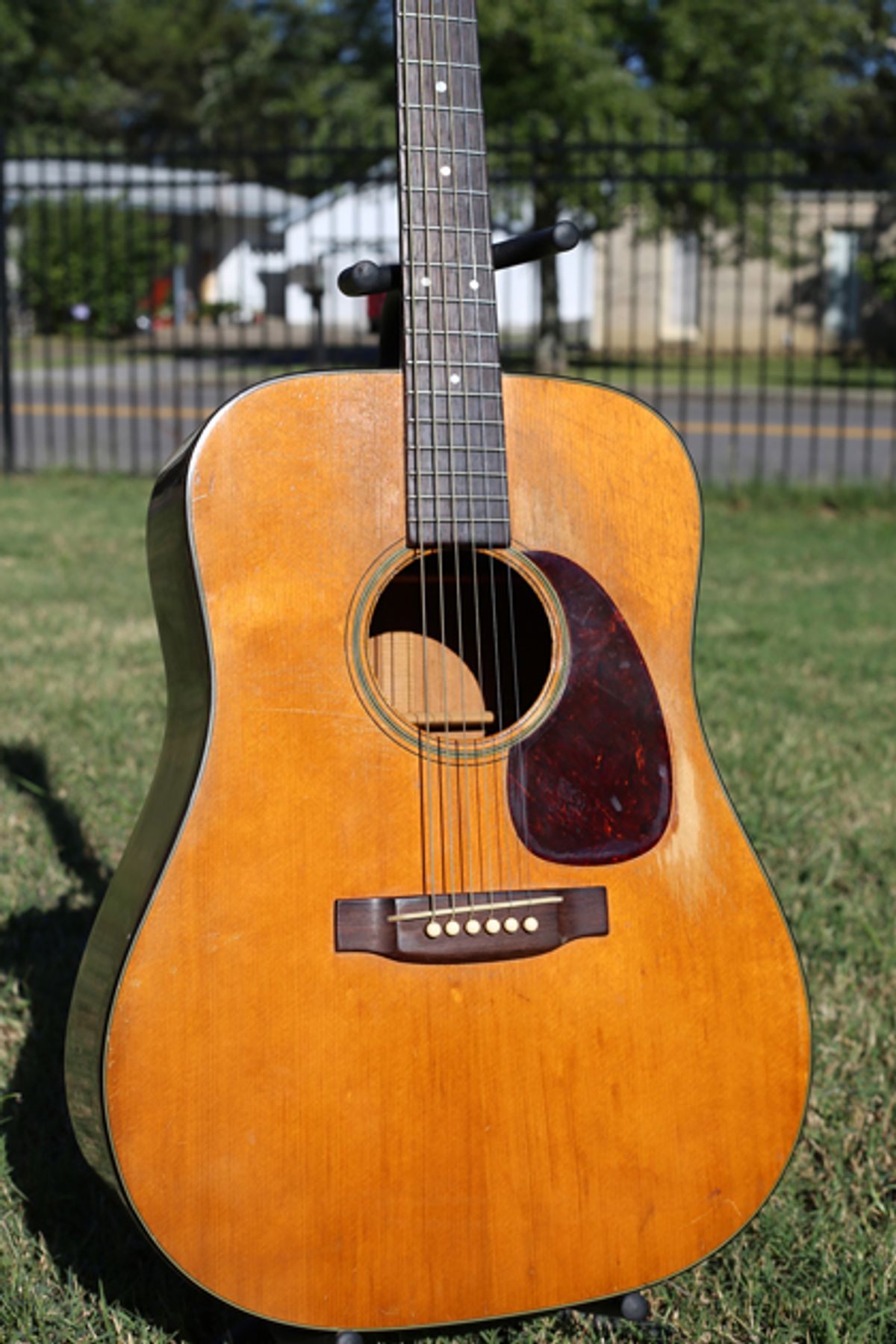
Does an acoustic guitar’s tone really change over time? If so, what properties of wood alter with age and affect an instrument’s sound and responsiveness?
Do acoustic guitars really “open up” with age and playing? It’s a phenomenon that every repair and guitar-building luthier I know believes in. All the top professional guitarists I’ve talked to about it also agree. But there is a vocal band of forum posters who steadfastly refuse to accept that guitars change and become more responsive to a player’s touch over the course of days, weeks, months, years, and decades.
The argument usually stalemates at the “no scientific proof” fork in the road. True, there is little or no published scientific proof that guitars change tonally with age. The noting of the phenomenon is mostly anecdotal and (as is often pointed out) long-term memory of tone is also poorly understood.
But as a guitar maker, I can state unequivocally that there are huge tonal changes in the first 24, 48, and 72 hours of stringing up a new guitar. This alone leads me to believe that even though the changes slow down, they don’t just stop after a month, a year, or a decade.
One style of flattop I build is made fairly stiff to enhance midrange projection. I’ve had to learn that the first sounds I hear are not the ones I’ll hear later. Since I can’t judge the results from the first strum, I have to wait a few days to get an idea of what the guitar will sound like. After it has been played for a couple of months, the guitar is about 90 percent of the way there. And after a few years, the tone will have settled for the most part, though it will continue to change.
So what’s going on? Are there physical changes from the stress of string tension? Does vibration loosen up wood fibers along nodal lines, much like the phenomenon of metal fatigue? What is the effect of oils in the wood that harden and crystallize as the volatile organic compounds slowly evaporate from the wood? Are there other explanations for wood changing with time? And the big question: Can these changes be artificially enhanced?
Luthier Alan Carruth has probably done more in-depth investigation into the science of acoustic guitar design than anyone else. One bit of science he has brought to the attention of the lutherie community is that wood consists mainly of cellulose, lignin, and hemicellulose, and that all wood gradually loses hemicellulose—a soluble polysaccharide—to evaporation over a long period of time.
are not the ones I’ll hear later.
The significance is that wood loses some weight along with some strength as it ages, but it does not lose stiffness as fast as it loses the tensile strength. As long as the tensile strength remains sufficient to withstand string tension, there is a net gain in one of the most important features of tonewood: the stiffness-to-weight ratio, which is known as Young’s modulus.
Let me back up a bit: The difference between strength and stiffness is one of the keys to understanding tonewoods. Tensile strength is a measure of the ultimate breaking point of any material put into a stretching mode. Stiffness, however, is a result of tensile modulus—a measure of how much a material will stretch under a given load. Hence, you can have a material with a very high breaking point (high tensile strength), but it may stretch and elongate a great deal before it breaks. On the other hand, you can have another material that will barely stretch at all before it reaches its breaking point.
Two modern materials that illustrate this are aramid fibers (Kevlar) and carbon fiber. Kevlar is used in products from bullet-resistant vests to very expensive racing yacht sails. Carbon fiber is often used by luthiers these days to add stiffness without a weight penalty to guitar necks and bracing. Kevlar has a higher tensile strength than steel for a given weight, but it stretches, which can be an advantage in many applications. Carbon fiber has a higher tensile modulus (stiffness factor) than the same weight in steel, but it will fail sooner than Kevlar. The trick in harnessing the tensile-strength and tensile-modulus factors of different materials is in knowing where you need which properties.
Different wood species and individual pieces all have different ratings for strength, stiffness, crush resistance, tendency to split, how much they may damp vibrations (the opposite of resonance), how well they glue, etc. The stiffness, resonant properties, density, and ultimate strength are the four most important aspects of what defines a tonewood, and these are also the properties that change with age and thus affect tone and responsiveness of guitars.
Next time out, we’ll continue this discussion and explore even more esoteric issues, such as methods being used to age wood and instruments artificially.

